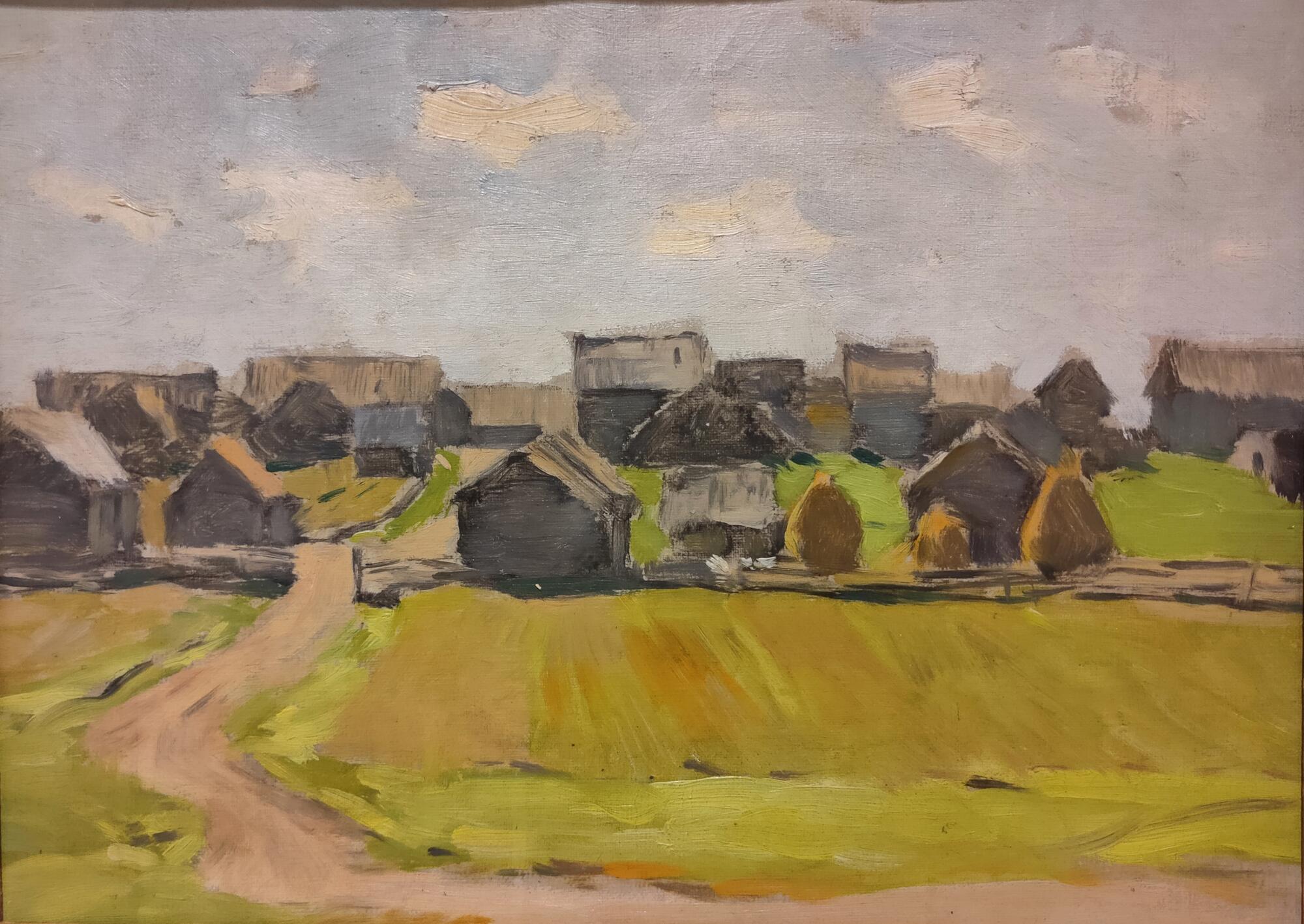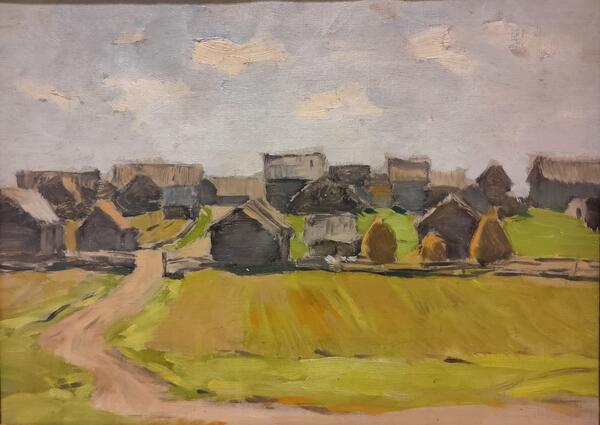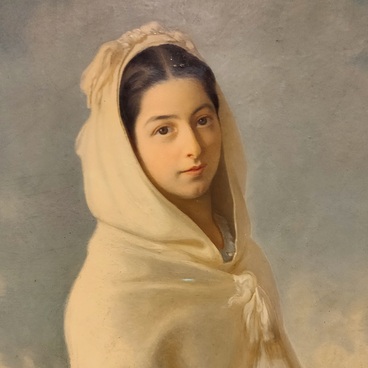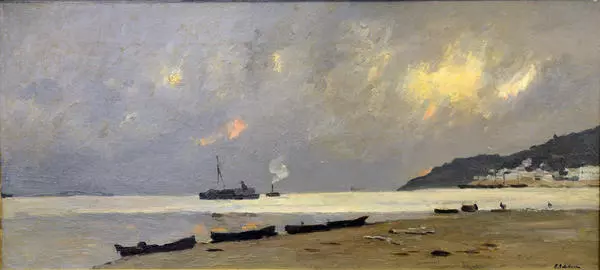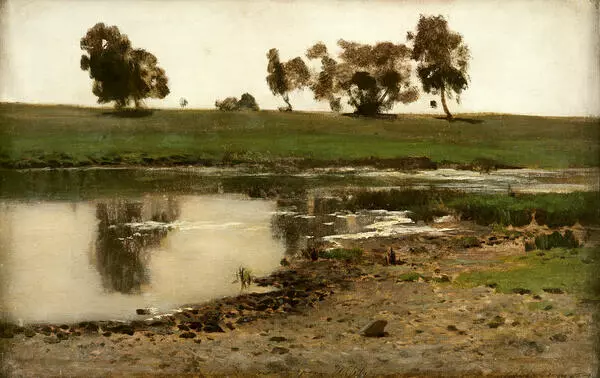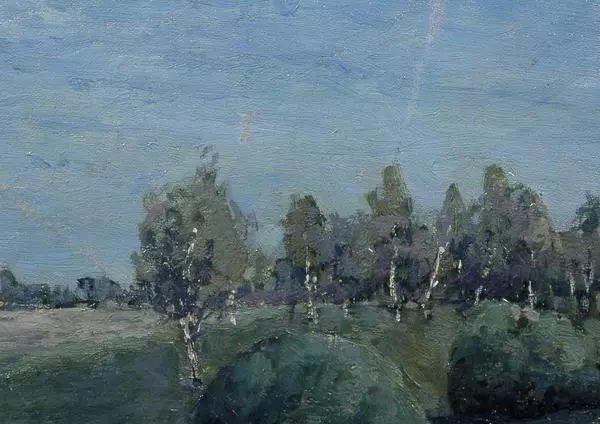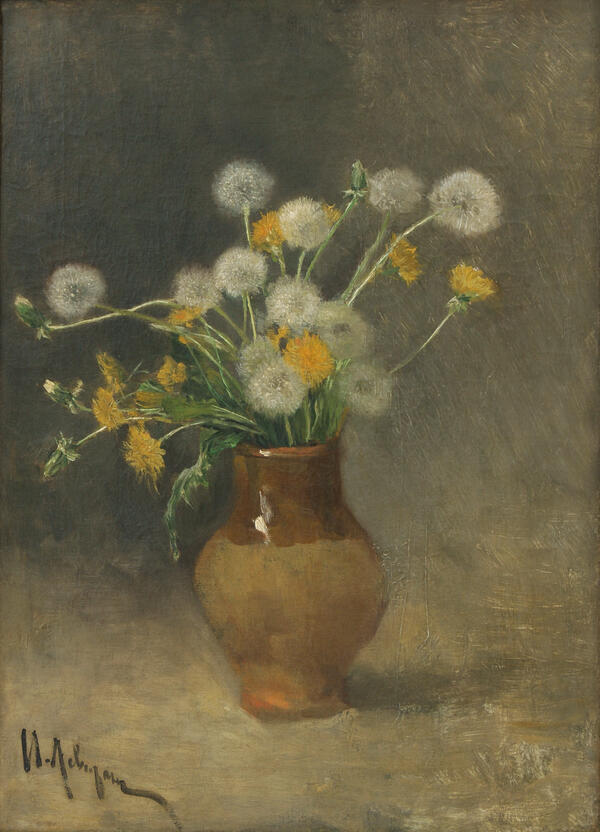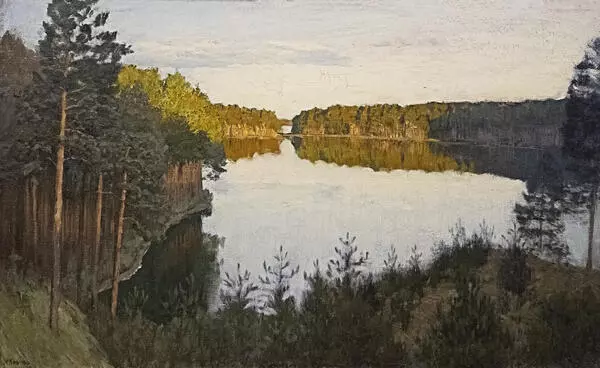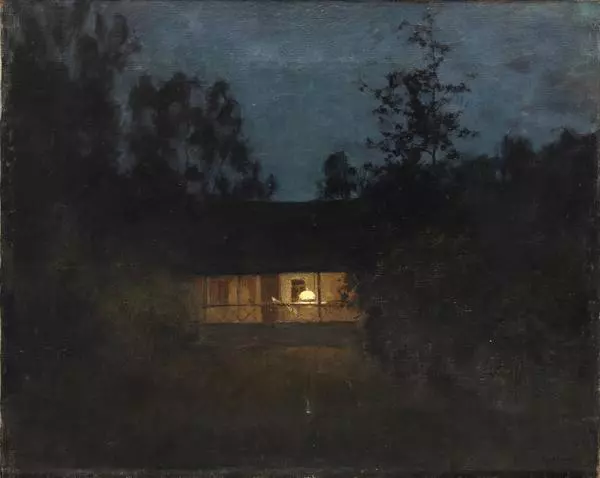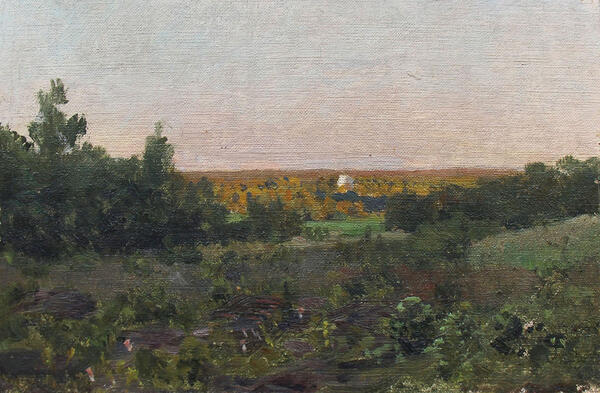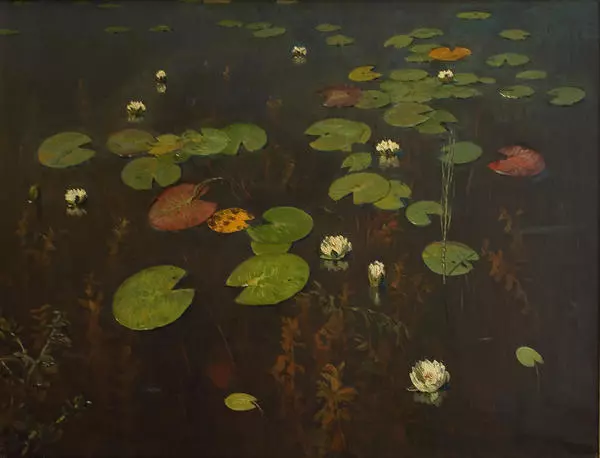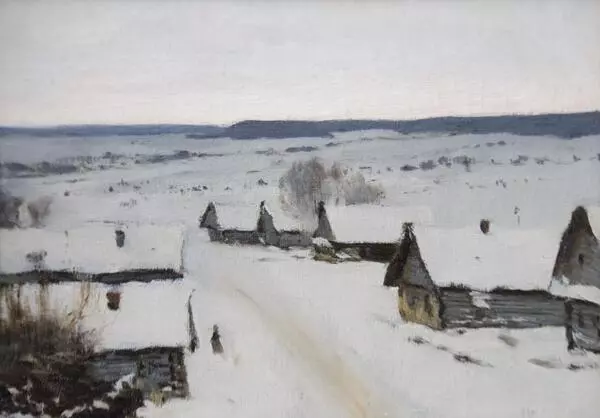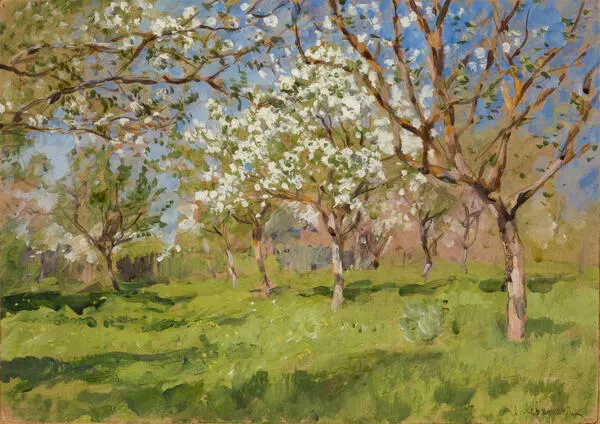Isaac Levitan created the painting ‘A Village, ” in 1890. He portrayed a Russian village with straight rows of houses, a country road, and lush green fields. The artist chose a bright and vibrant color for the painting — warm colors were selected so that the look of the landscape brought back pleasant memories of summer. The artist was able to generalize the blooming fields into large patches using light and smooth movements with the paintbrush. He outlined the clouds in the sky using sharp, full brush strokes.
Isaac Levitan is famous for being one of the creators of the “mood landscape, ” genre. He was among the first to convey his emotions through landscapes. His paintings were never an exact representation of reality. The artist never painted just a simple view — he romanticized it and made it poetic. Landscapes on the same topic could reflect completely different moods of the artist: from cheerful and happy emotions like in the paintings, “The Birch Grove, ” “Fresh Wind, ” and “March” — to contemplative and sad, as in “Summer Evening, ” and “Gloomy.” Isaac Levitan told that his work is “not a protocol, but an interpretation of nature through illustration.”
It is known that Isaac Levitan was good friends with writer Anton Chekhov. He often visited him and painted landscapes at his country house several times. The writer Konstantin Paustovskiy compared the works of the two friends, and claimed that the artist’s works ‘require[d] a thorough analysis. They aren’t overwhelming to the eye. They are modest and meticulous, similar to Chekhov’s stories, but the longer you look at them, the nicer familiar rivers and country roads, and the silence of the rural towns become.’ The artist Nikolay Krymov also admired his work. He wrote: ’… I was impressed by Levitan’s unusual subtle vision, and his ability to convey the times of day and the characteristics of Russian nature.’
Two years before the creation of the painting “A Village, ” the artist alongside other artists organized a creative trip on a steamboat along the Oka and Volga rivers. During this trip, they decided to stay at the small town of Plyos. Levitan fell in love with this town and its surroundings, and spent three productive summers in Plyos.
Isaac Levitan only lived up until a few years before his 40th birthday, but he left behind a large number of works that revealed so many different facets of the beauty of Russian nature. It is believed that his painting “Above eternal peace, ” which he painted in 1894 became the “most Russian, ” out of all the paintings he has ever painted on Russian related themes.
Isaac Levitan is famous for being one of the creators of the “mood landscape, ” genre. He was among the first to convey his emotions through landscapes. His paintings were never an exact representation of reality. The artist never painted just a simple view — he romanticized it and made it poetic. Landscapes on the same topic could reflect completely different moods of the artist: from cheerful and happy emotions like in the paintings, “The Birch Grove, ” “Fresh Wind, ” and “March” — to contemplative and sad, as in “Summer Evening, ” and “Gloomy.” Isaac Levitan told that his work is “not a protocol, but an interpretation of nature through illustration.”
It is known that Isaac Levitan was good friends with writer Anton Chekhov. He often visited him and painted landscapes at his country house several times. The writer Konstantin Paustovskiy compared the works of the two friends, and claimed that the artist’s works ‘require[d] a thorough analysis. They aren’t overwhelming to the eye. They are modest and meticulous, similar to Chekhov’s stories, but the longer you look at them, the nicer familiar rivers and country roads, and the silence of the rural towns become.’ The artist Nikolay Krymov also admired his work. He wrote: ’… I was impressed by Levitan’s unusual subtle vision, and his ability to convey the times of day and the characteristics of Russian nature.’
Two years before the creation of the painting “A Village, ” the artist alongside other artists organized a creative trip on a steamboat along the Oka and Volga rivers. During this trip, they decided to stay at the small town of Plyos. Levitan fell in love with this town and its surroundings, and spent three productive summers in Plyos.
Isaac Levitan only lived up until a few years before his 40th birthday, but he left behind a large number of works that revealed so many different facets of the beauty of Russian nature. It is believed that his painting “Above eternal peace, ” which he painted in 1894 became the “most Russian, ” out of all the paintings he has ever painted on Russian related themes.
